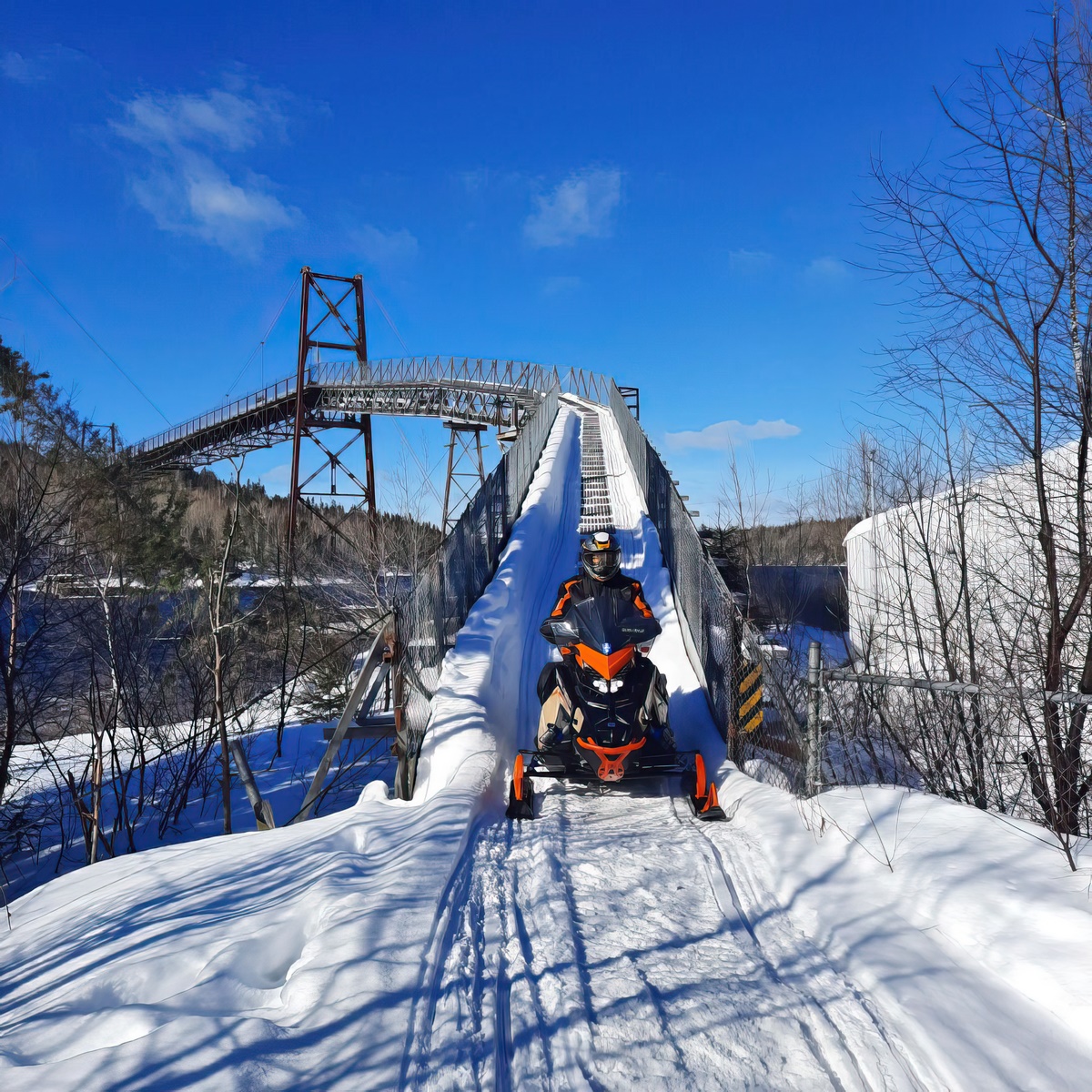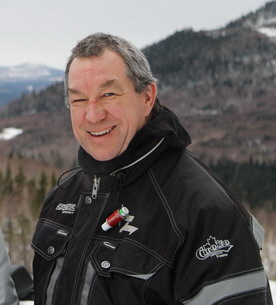Table of contents
ToggleQuebec’s snowmobile trail infrastructures for snowmobile trails are one of the best worldwide. Not all of them are unique and exclusive to the province, but it is remarkable, nonetheless. There are many examples of its ingenuity the province.
You can clearly tell that there is always a lot of planning that goes into it. The trails seem to all be woven from the same fabric. You come to realize the trails are almost a cultural phenomenon. When you start travelling, the differences and particularities are immediately noticeable.
My perspective on the subject comes from two sources. My first point of reference is based on my own experience riding in Quebec since the early 1990s and almost every season since. I usually ride approximately 5000 km per season on FCMQ trails. I have also ridden in eight provinces and six states. My second approach to the topic comes from my professional career. For 24 years, I’ve had the privilege to serve as the General Manager of the New Brunswick Federation of Snowmobile Clubs.
Note that I have not spoken directly with the Quebec Department of Transportation for this article. While I do have friends at the FCMQ office, I did not consult them regarding this article either.
Infrastructure
The word “infrastructure” has been used in French since 1875 originally meaning “installations that form the basis for any operation or system.” It was only adopted by the English language 12 years later.
“Infrastructure” is a combination of the Latin prefix “infra,” meaning “below,” as many constructions in the 1800s were underground (for example, tunnels, water and gas systems, and railways), and the French word “structure” (derived from the Latin word “structure”). By 1970, it was adopted by urban planners in its modern civilian sense.
Some may say the combined efforts of the FCMQ and Quebec’s provincial Department of Transportation are not the best partnership for trail infrastructure. To those, I raise the following question: who in North America does it better?
Highways With Trail Lanes
When Quebec builds a new highway, they do not block off the existing snowmobile (or off-road and non-motorized) trails. They do not ignore the local volunteers who do not have the resources to always adapt to the new rerouting of trails. The ministry incorporates the trails into the public highway’s infrastructure. When finished, many of the newer transportation overpasses constructed in Quebec include a “third” lane. These allow trails to avoid crossing many highways, especially 4-laners.
The 3rd lane creates a designated passage for the Club’s groomers. They are designed and engineered to provide adequate space to construct and maintain the snow trails. The lane also improves the security of the automobiles and the snowmobilers by keeping them separated while still beside one another. Many of these 3rd lanes are utilized year-round.
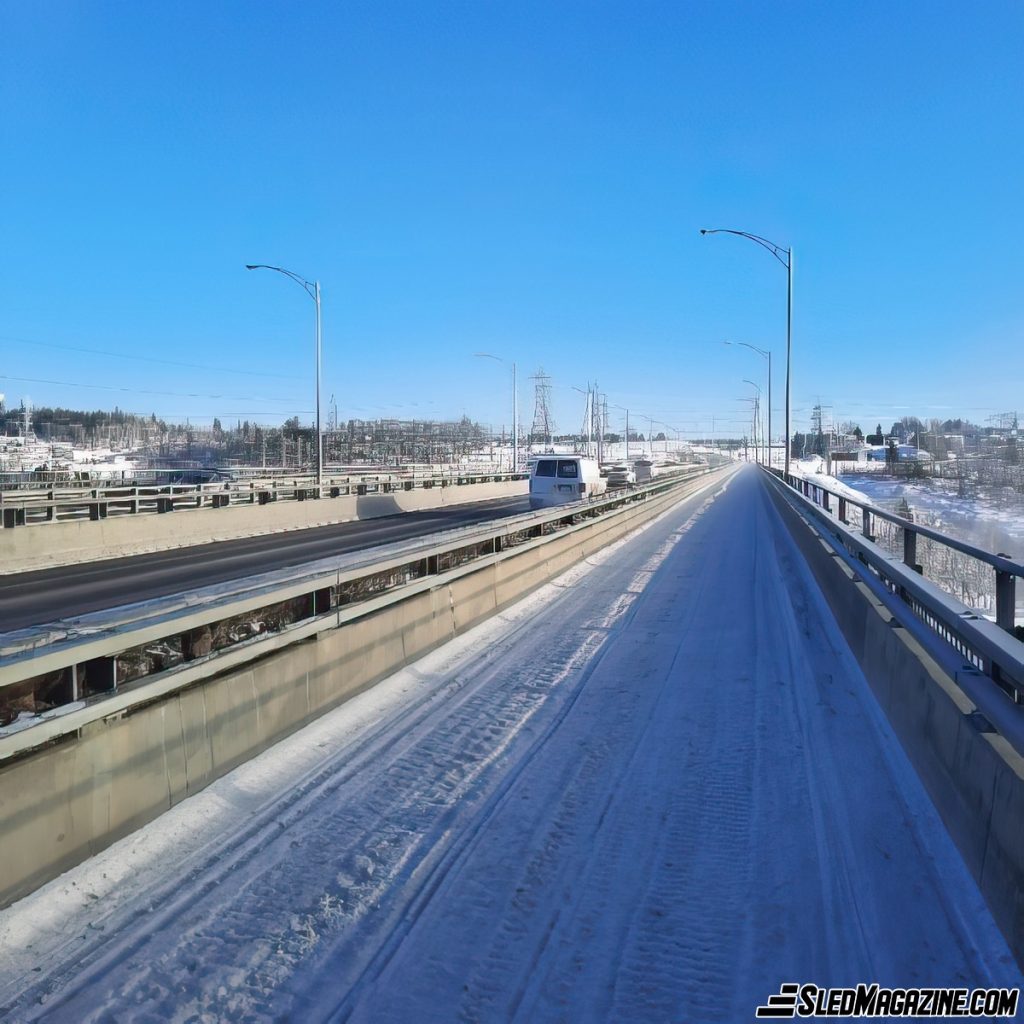
Is this type of infrastructure incorporated into Quebec’s public transportation system unique? Possibly not. However, it is becoming more and more common in a growing number of regions. It has so many benefits and very few downsides. The results are impressive, and the safety and overall benefits are truly reaped from adequate planning and responsibility.
The Department of Transportation Is in Charge
In Quebec, the correct name of the department is Ministère des transports du Quebec – Transports Quebec for short. Transports Quebec is responsible for (snowmobile) registrations and driver licensing. The ministry is also responsible for driver examination centres, provincial highways, and the maintenance of roads and bridges.
Transports Quebec also has the responsibility for the legislative act Chapter V-1.3 respecting the governance of off-road vehicles.
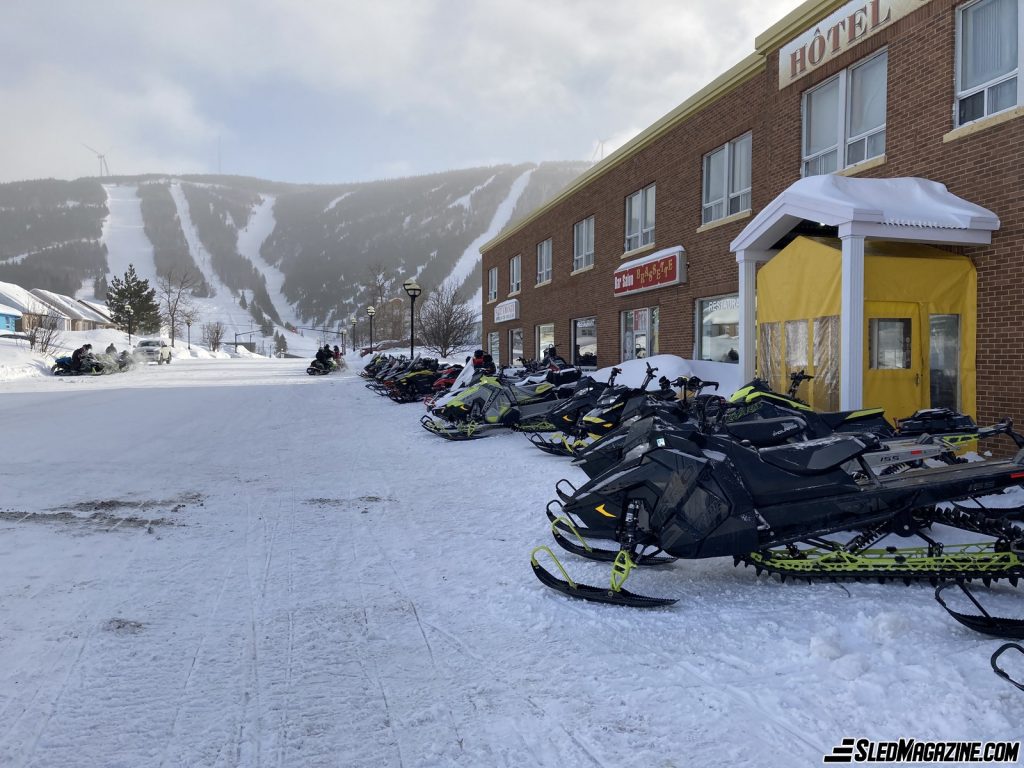
These cumulative responsibilities ensure the upkeep and viability of trails intersecting roads and highways.
Provincial Ferries
In the maritime regions of Quebec, ferries serve as extensions of the road and trail networks. These passages allow us to visit both shores of the St. Lawrence River without needing to backtrack on a trail. The ferries are a novel way to travel; I would bet these are quite unique to Quebec’s snowmobile trail infrastructure. The ferries also offer unique perspectives on the surrounding scenery and marine mammals in the majestic St. Lawrence.
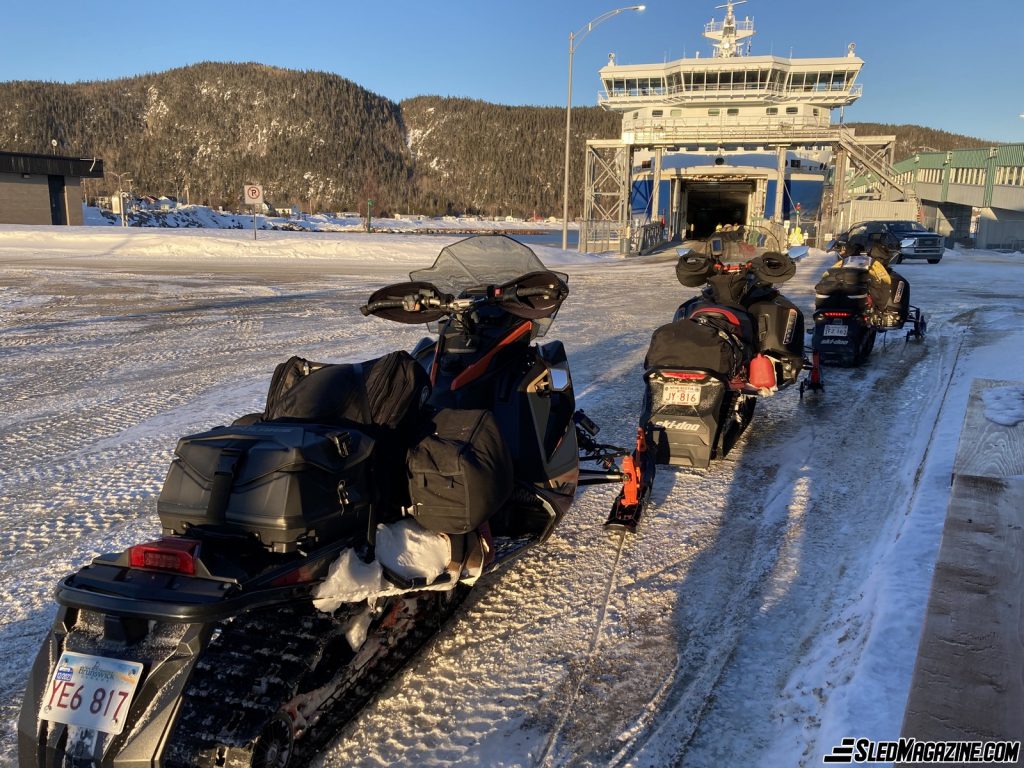
In the winter, two ferries link the North and South shores of the St. Lawrence in Eastern Quebec – Matane to Baie-Comeau, or Godbout to Matane. There is a total of four in the summer.
These sea routes increase your riding options. The FCMQ trails lead you to and from the ferry terminals. Depending on how much time you have, you can plan for smaller or larger trail loops.
Trail Bridges
Quebec’s trail bridges are legendary. When you ride in Quebec for the first time, I can assure you it is probably the very first trail infrastructure that you will notice as being special.
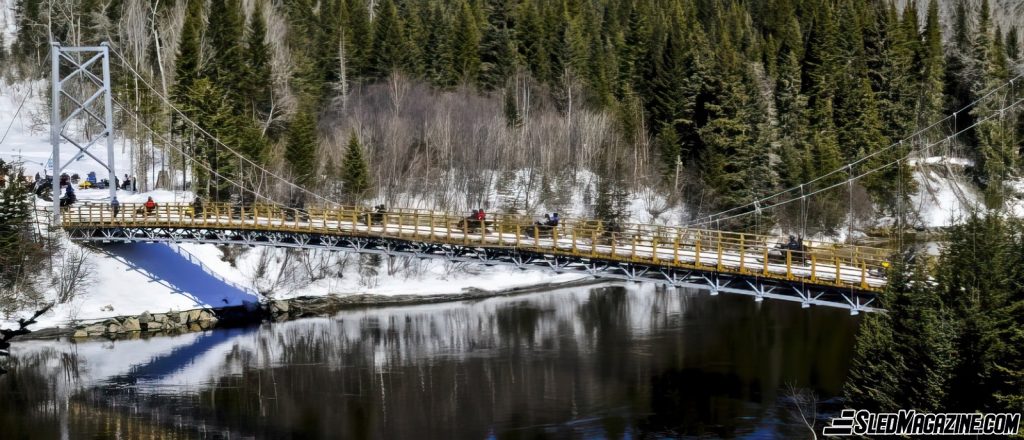
Many are built to accommodate trail groomers while others are cable-linked structures and destined to snowmobiles only. More and more are being constructed in or near municipalities to link all types of trails, no matter the season. The partnerships often extend beyond the efforts of the FCMQ and DOT to the Federal Government of Canada and the Municipality they are located within.
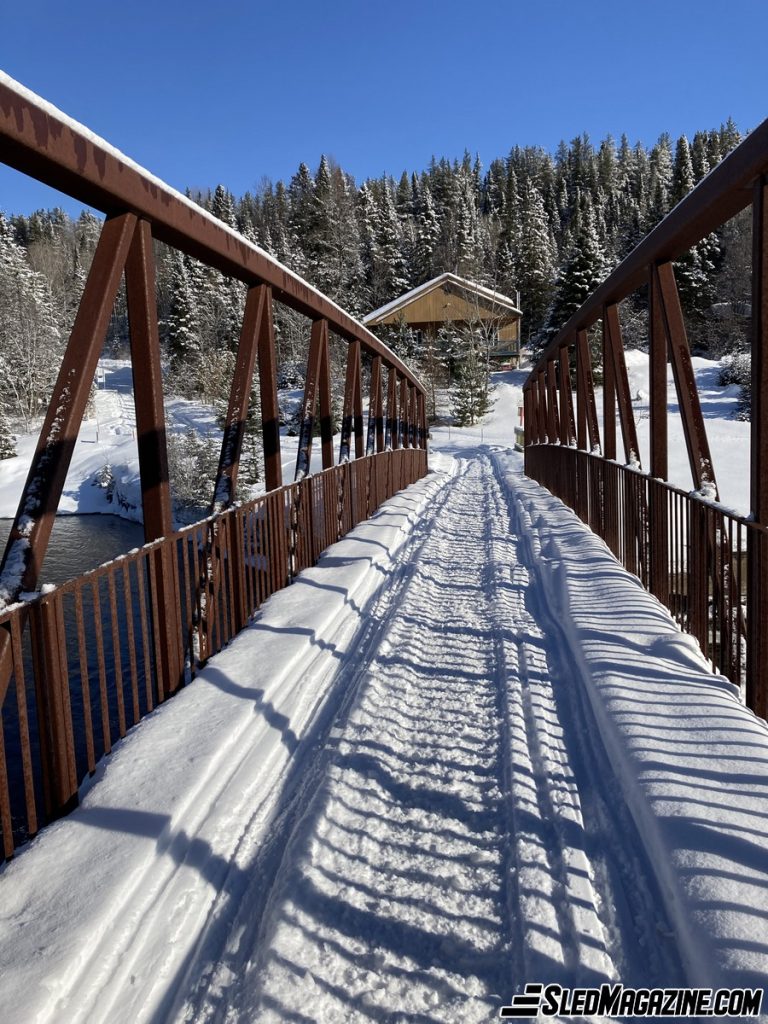
Overall, riding over frozen waterways in Quebec is becoming less and less common.
The World’s Largest Snowmobile Bridge
The snowmobile bridge in the Côte-Nord region across the Manicouagan River is still the highest snowmobile trail bridge in the world. It is one of the most famous and largest of its kind. It is located about halfway between Chute-aux-Outardes and Baie-Comeau. This bridge is 213 metres (700 feet) long and 28 metres (90 feet) high. To no one’s surprise, crossing it is on many snowmobilers’ bucket lists.
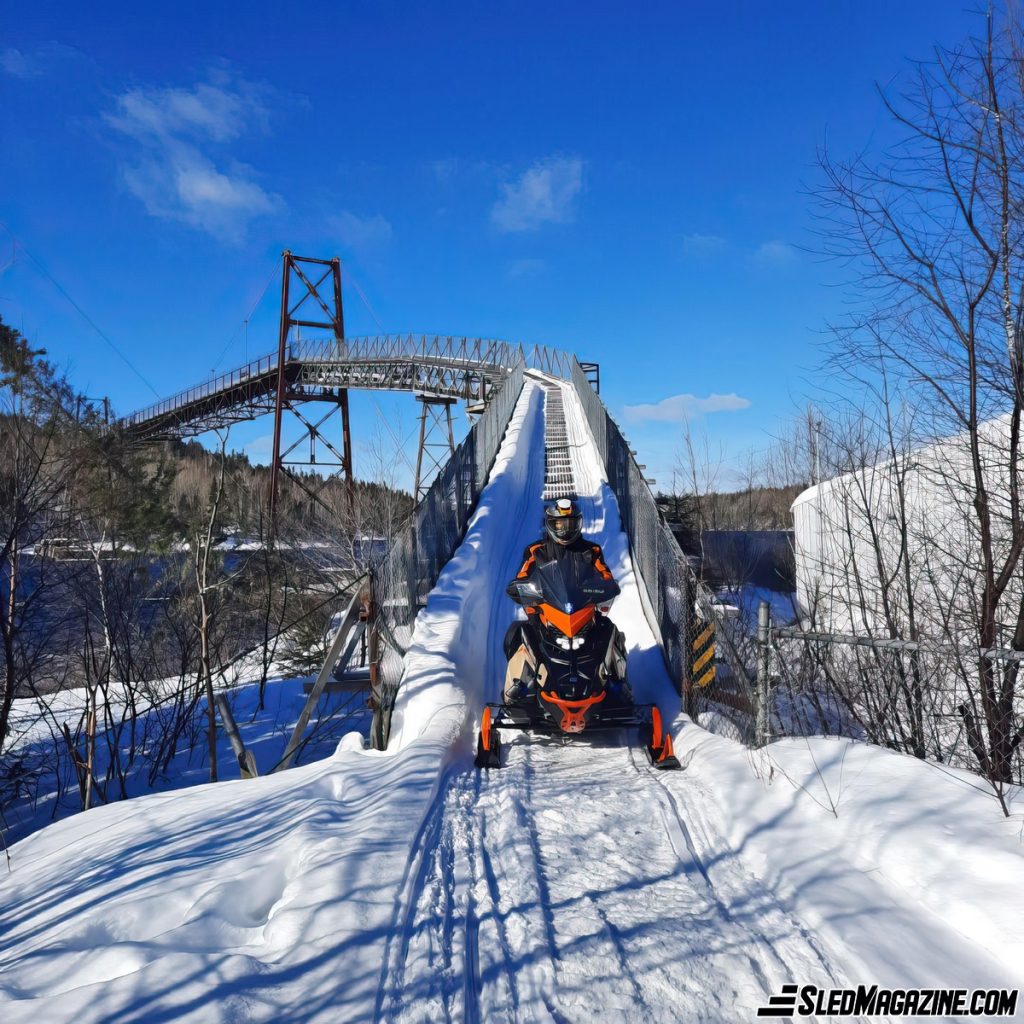
In February of 2022, a new repurposed train bridge was opened, connecting the FCMQ trails with their (other) neighbour, the Ontario Federation of Snowmobile Clubs (OFSC). After its official opening, the former Morris Island train bridge became the world’s longest snowmobiling bridge. It connects the trails in Ontario and Quebec and spans 487 metres (1598 feet) across the Ottawa River, making it the largest of its kind in the world.
Future – Electric Charging
In Quebec, where manufacturers of the first electric snowmobiles BRP and Taiga are based, trail infrastructures stands out once again.
According to a Taiga press release in March of 2023, there are an estimated 5,000 kilometres of the province’s 30,000-kilometre trail network that are accessible on an electric snowmobile.
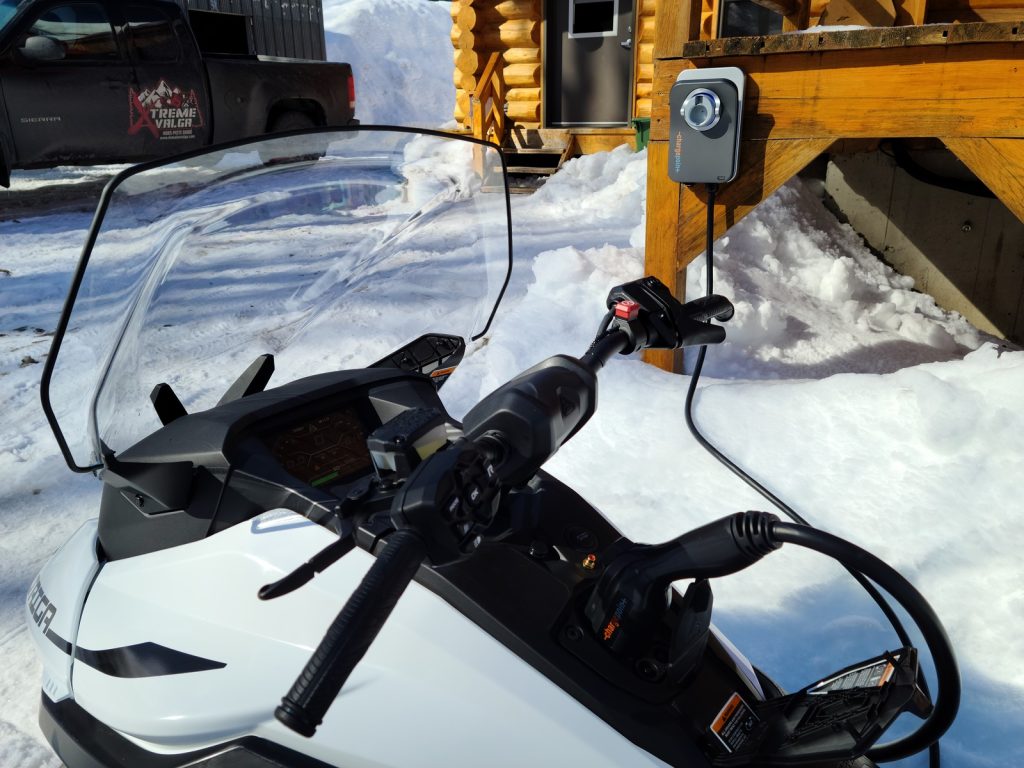
The new Direct Current Fast Charge (DCFC) capabilities mean faster charging for more time riding. Riders in Quebec can plug into standard automotive DCFC stations, using the already-equipped CSS1 combo connector port used across North America.
Final Observation
I will conclude this article with a personal observation and opinion. I have always felt so welcomed and accepted when snowmobiling in Quebec. The effort and work that is put in daily by the club volunteers to maintain and service the trails, no matter the challenges, make all the difference.
The snowmobile culture is so present in the province that many destinations do not bat an eye when you ride on a sidewalk or a snowplowed street to access gas stations, accommodations, or local cafés. I’ll always remember how parking my snowmobile on the street in Senneterre to have breakfast was just as expected and accepted as it would be with an F-150.
Quebec’s unique trail infrastructure makes it a leader in the snowmobile world.

